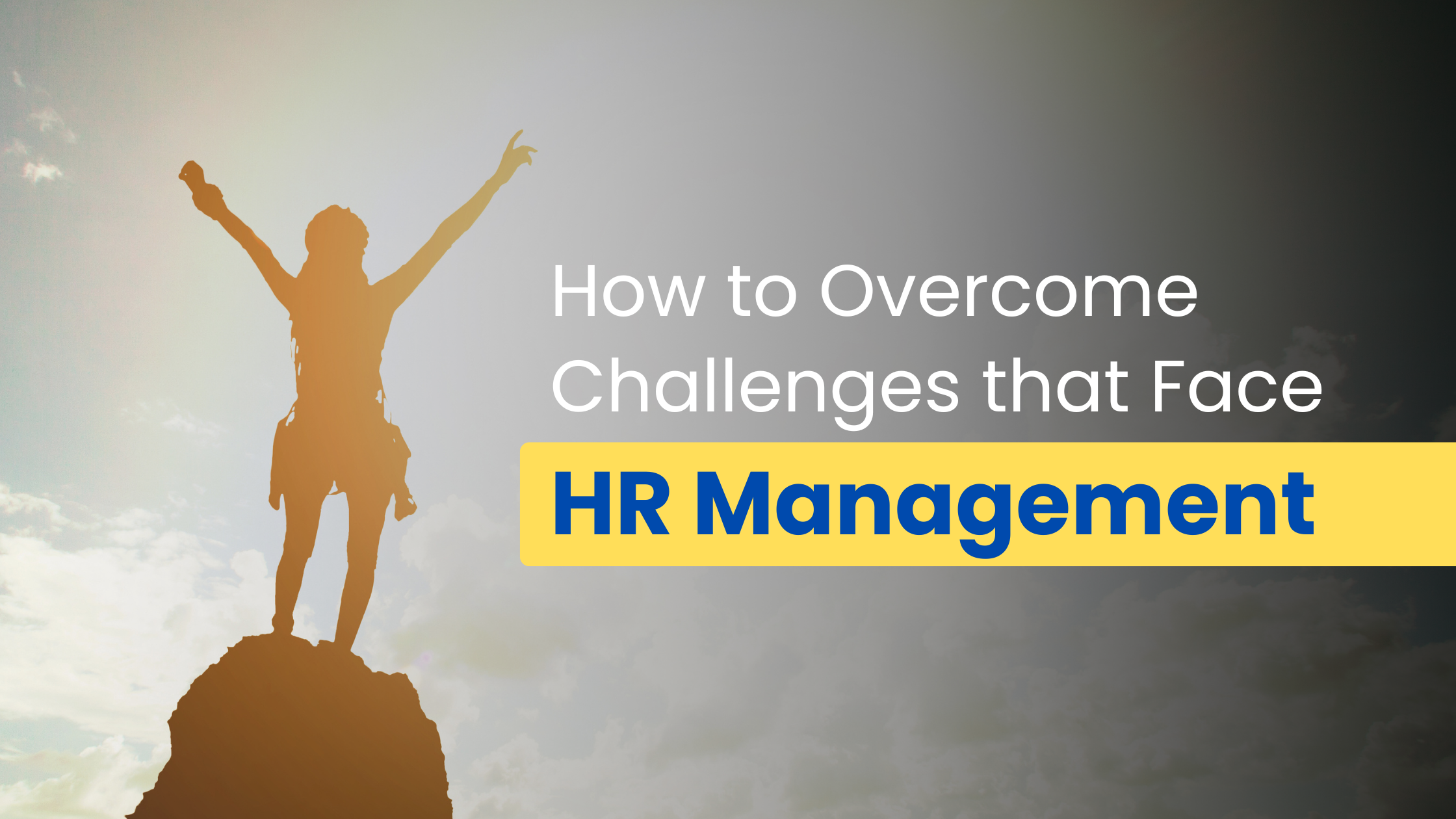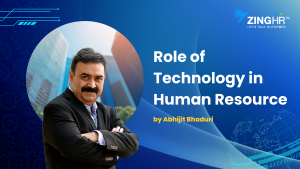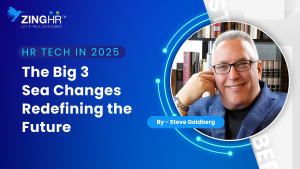We are approaching 2025 and workforce challenges are evolving and changing the way we manage our HR. The modern workforce is all about rapid tech advancements, shifting employee expectations and diversity and inclusion.
According to recent research, 70 percent of companies are struggling with remote work and 65 percent are struggling to retain and motivate employees.
These HR challenges in the modern workforce need cutting-edge solutions and forward-thinking strategies.
This blog will explore the critical issues shaping HR management today, from HR challenges in 2025 to the adoption of cutting-edge technologies, offering insights to help you adapt and succeed in this ever-changing world.
Top 15 HR Challenges in 2025 (+Solutions)
1. Attracting Top Talent
The competition for talent has got tougher with the changing job market, remote work and Gen Z in the workforce. Candidates have so many options now and it’s getting harder for organisations to stand out.
Since the job market has changed and remote opportunities have increased, competition for top talent has increased.
With so many options available, companies are having difficulty to standing out. Many job seekers prefer companies that share their values and provide career development opportunities.
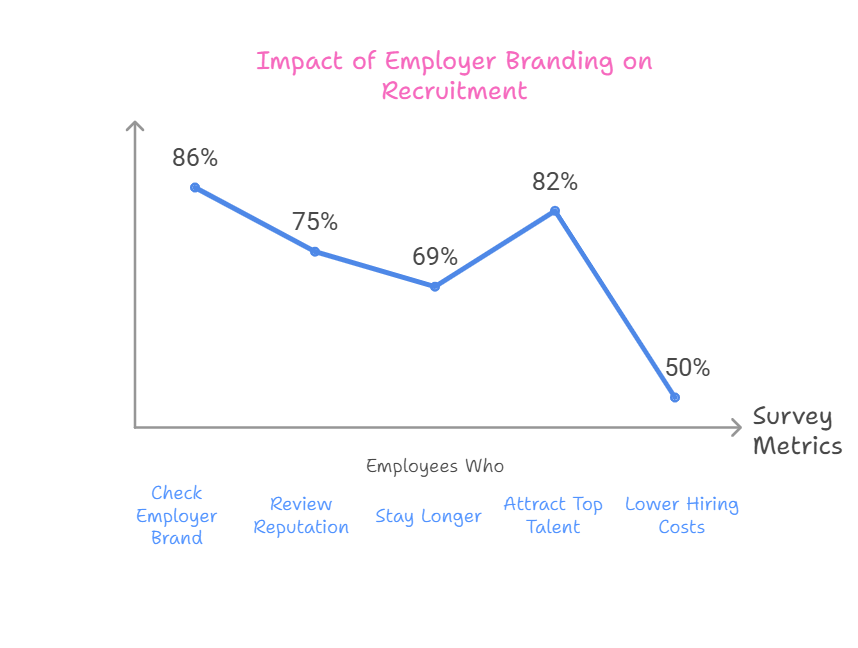
Solution:
To get the best talent,
- Organisations must build a strong employer brand that appeals to both seasoned professionals and Gen Z.
- You can showcase your company culture, learning and development opportunities and benefits through careers pages, social media and employee testimonials.
- Develop clear learning and development programs, offer upskilling opportunities, and offer career advancement paths that address the demand for growth.
- Use AI-powered recruitment tools to find candidates faster and improve the hiring experience.
- Partner with educational institutions, offer internships and leverage employee referrals to strengthen the talent pipeline and address skill gaps.
2. Orientation Programs for New Hires
Unstructured onboarding can leave new hires feeling lost and unprepared, leading to lower engagement and slower productivity. Many companies don’t provide clear expectations or resources to help new employees get up to speed.
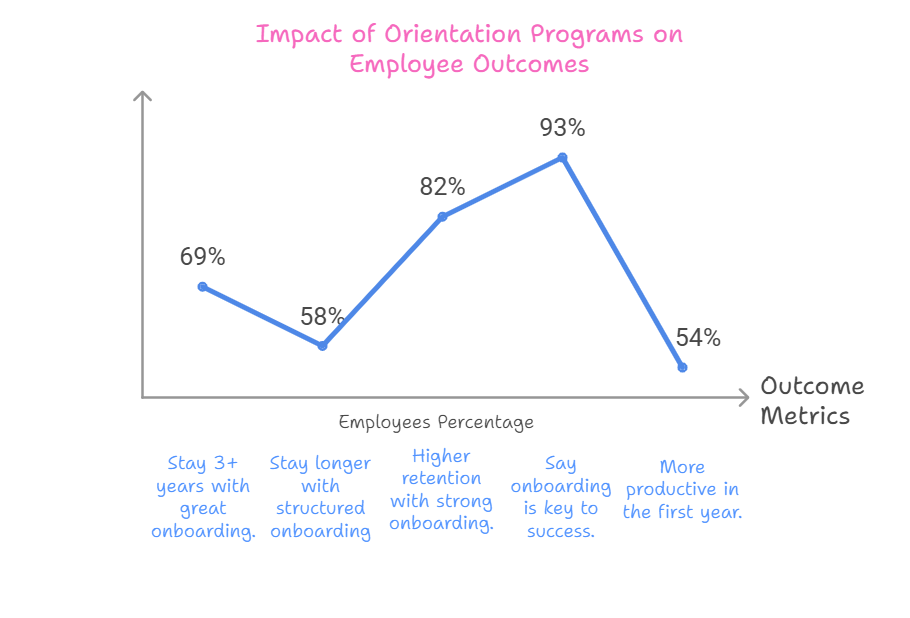
Solution:
- You can create a comprehensive, educational, and interactive onboarding program. Use a mix of digital tools and in-person sessions to walk new hires through their roles and team and company goals.
- Include personalized welcome kits, virtual town halls and one-on-one meetings with managers to make them feel part of the team.
- Follow up in the first 90 days to address questions and provide ongoing support.
3. The Rise of Remote Work
Remote work has changed the traditional workplace, but it also brings its own problems – how to collaborate, feel part of the team and not isolated Teams struggle to build trust and cohesion without face-to-face interaction. Leaders struggle to monitor performance and productivity in remote environments.
Solution:
- Create a strong virtual work environment by using tools like Slack, Zoom and Microsoft Teams.
- Schedule regular virtual team-building activities and encourage informal interactions to strengthen team bonds.
- Set performance metrics and establish effective communication channels to stay aligned.
- Offer stipends for home office setups to increase employee productivity.
4. Data Privacy and Security Concerns with Remote Work
The shift to remote work has introduced new cybersecurity risks to the organisation. Employees are accessing sensitive data on personal devices or unsecured networks, it can increase the risk of data breaches and compliance breaches. These can damage the organisation’s reputation and result in costly fines.
Solution:
- Establish robust cybersecurity measures like multifactor authentication, VPNs, and regular security audits.
- Educate employees on the importance of protecting sensitive data, including identifying phishing scams.
- Apply strong password policies and endpoint security software to minimize vulnerabilities. Maintain and update data privacy policies on a regular basis to comply with regulations.
5. Integration of AI and Automation
It is true that AI and automation offer huge benefits in terms of efficiency and productivity, but their implementation can create employee resistance. Employees may fear job replacement or feel unprepared for using new technology, which will impact morale and productivity.
Solution:
- Automate repetitive and time-consuming tasks such as payroll, scheduling, and candidate screening gradually.
- Offer workshops and training programs to help employees understand and use AI tools.
- Show how AI can augment roles rather than replace them by focusing on tasks that require creativity and critical thinking.
- Build cross-functional teams to oversee the implementation and address concerns proactively.
6. Upskilling and Reskilling Employees
Nowadays, rapidly changing technology and role change implies employees need to upskill constantly. Many organizations struggle to keep up with industry demands and end up with skill gaps that impact productivity and new innovation. Without training initiatives, employees feel stuck and that affects job satisfaction and retention.
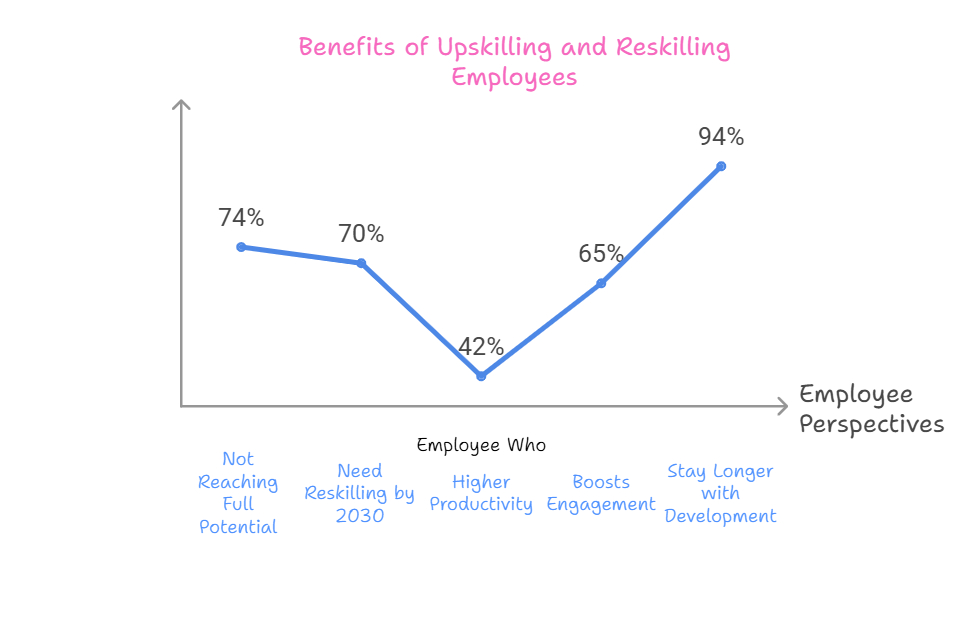
Solution:
- Regularly assess workforce skills to identify gaps and align training to future business needs.
- Offer learning platforms like LinkedIn Learning or Coursera where employees can do self-paced courses.
Collaborate with industry experts to create custom training modules for your organisation.
Implement mentorship and job shadowing programs to facilitate hands-on learning and knowledge transfer.
Incentivise learning through rewards and career advancement opportunities. Providing clear pathways for upskilling means employees feel invested and prepared for the future.
7. Improving Employee Engagement
Disengagement leads to lower productivity, more absenteeism and higher turnover rates. Many organizations struggle to create an environment where employees are motivated, collaborative and satisfied. Lack of recognition, limited growth opportunities and poor communication can lead to disengagement.
Employees feel disconnected when their efforts go unrecognised or when they don’t have sense of purpose at work.
Solution:
- Build a culture of recognition by celebrating employee achievements regularly. Implement tools like employee engagement surveys to gather feedback and understand pain points.
- Use the data to create action plans to address concerns and enhance workplace satisfaction. Encourage collaboration and knowledge sharing through team projects, workshops and open forums.
- Providing opportunities for personal and professional growth like leadership training or cross-departmental exposure can also deepen connection to the organization.
8. Reducing Employee Retention
High employee turnover disrupts operations, increases recruitment costs and damages team morale. Employees leave due to limited career progression, inadequate recognition or unbalanced workloads.
Solution:
- Establish a supportive and growth-oriented workplace and offer regular feedback to employees so they know their next steps.
- Foster open communication channels where employees feel comfortable sharing their concerns. Impalement retention-focused programs like mentorship, flexible work arrangements and wellness initiatives.
- Conduct exit interviews to identify common reasons for attrition and create strategies accordingly.
9. Rising Importance of Mental Health Support
A WHO study found depression and anxiety cost the global economy $1 trillion in lost productivity each year due to mental health issues at work. Burnout, anxiety and work-related stress are on the rise.
Employees expect companies to prioritize their well-being, but many organizations don’t have the framework and resources to address these concerns effectively.
Work related stress, excessive workloads and lack of psychological safety can lead to absenteeism, disengagement and higher turnover rates.

Solution:
- Companies need to create a culture where mental health is talked about openly and supported.
- Implementing Employee Assistance Programs (EAPs), offering confidential counseling services and providing wellness stipends can make a big difference.
- Leadership should encourage flexible work schedules to prevent burnout and allow employees to manage stress.
- Regular pulse surveys can also help gauge employee well-being and identify areas in which support is needed. Training managers in mental health can help them recognize early signs of distress and assist their teams accordingly.
10. Balancing Productivity
The demand for high performance in a fast-paced business environment leads to unrealistic workloads and employees feel overwhelmed and demotivated.
In addition to the rise of remote and hybrid work, it is also harder to monitor productivity without micromanaging. Gallup estimates that 85% of employees worldwide are disengaged or not engaged at work, which results in lower efficiency and job dissatisfaction.
Solution:
- Organizations need to move from time-based productivity metrics to output-based performance measurement.
- Implementing clear Key Performance Indicators (KPIs) helps employees to understand expectations while giving them autonomy to achieve their goals.
- Encouraging a culture of accountability rather than supervision ensures employees feel trusted and motivated.
- Utilizing AI-driven performance analytics to track productivity trends and provide data-driven insights
- Also, creating a results-oriented work environment with flexible work arrangements can help employees balance efficiency with well-being.
11. Change Management
Organizations go through changes – technology, leadership, policies or business strategies. But employees resist change due to uncertainty, fear of job loss or lack of clear communication. According to McKinsey, 70% of organizational change efforts fail due to employee resistance and lack of management support. Bad change management leads to confusion, low morale and lower productivity.
Solution:
- Change management starts with transparent communication. Employees need to know why changes are happening, how they will be impacted and what benefits they can expect.
- Leadership must engage employees early in the process through workshops, town halls and feedback sessions.
- Upskilling can ease concerns about job security and help employees transition into new roles.
- A structured change management framework like Kotter’s 8-Step Change Model can help organizations navigate transitions better.
- Recognizing and rewarding adaptability can reinforce a positive attitude towards change.
13. Employee-Related Policies
Employee policies such as remote work policies, diversity and inclusion policies, performance metrics, and workplace code of conduct shape an organisation’s culture.
Outdated or unclear policies cause confusion, misalignment and employee dissatisfaction. Companies often face resistance when introducing new policies especially if they are not transparent or don’t consider employee concerns.
Solution:
- Ensure all employee policies are documented, make them easily accessible and communicate them. HR should seek employee input when designing new policies to ensure they address real workplace issues.
- Regular policy reviews and updates based on employee feedback and business needs will keep them relevant. Providing training sessions and handbooks on workplace policies will ensure employees know their rights, responsibilities and company expectations.
- And open-door communication will allow employees to speak up about policies and suggest improvements.
14. Enhancing ESG Frameworks
ESG is now impacting corporate reputation and investor decisions. Consumers and employees expect companies to be sustainable, ethically sourced and socially responsible.
But many organisations struggle to integrate ESG into their core business and end up with ineffective implementation and missed opportunities for positive impact.
Solution:
- Companies must take a holistic approach to ESG by setting clear goals and embedding sustainability into daily operations. An ESG audit will help identify areas for improvement whether it’s carbon footprint reduction, ethical sourcing or CSR.
- Sustainability training for employees will ensure they know how their role contributes to ESG goals. Companies should also increase transparency by publishing ESG reports that show progress and accountability.
- Partner with environmental organizations, and introduce green initiatives in the workplace and diversity and inclusion programs to strengthen ESG commitments.
15. Succession Planning
Many organizations have leadership gaps due to an ageing workforce, sudden resignations or lack of internal talent development.
Without a clear succession plan, companies risk operational disruption, knowledge loss and decreased employee morale. A Deloitte study found that only 14% of companies believe they have a strong succession plan in place, leaving them exposed to leadership crises.
Solution:
- Succession planning should be a continuous process, not a last-minute reaction. Organisations need to identify high-potential employees early and invest in their development through leadership training, mentoring programs and cross-functional assignments.
- Building a talent pipeline means employees are ready for leadership roles when the need arises. Regular performance reviews and leadership assessments help track progress and readiness.
- Involving senior leaders in mentoring potential successors ensures knowledge transfer and smooth transitions. Succession planning should align with long term business goals to ensure leadership continuity and stability.
Wrap Up
The changing work environment presents new challenges for HR, and HR leaders need to be strategic and agile. Organisations need to navigate talent acquisition, technology, regulatory changes and employee expectations while keeping business going and growing.
A structured approach to workforce development – upskilling, reskilling and AI-driven efficiencies – will help organisations stay ahead of the curve. At the same time, addressing employee engagement and mental health will create a productive and inclusive workplace. Companies with improved succession planning, compliance, and ESG frameworks will be better prepared for future workforce fluctuations.
HR leaders who manage change, data-driven decision making and employee-centric initiatives will create resilient, futureproof organisations that can thrive in a changing business world. The answer lies in balancing innovation with employee wellbeing while aligning the business to the workforce.

